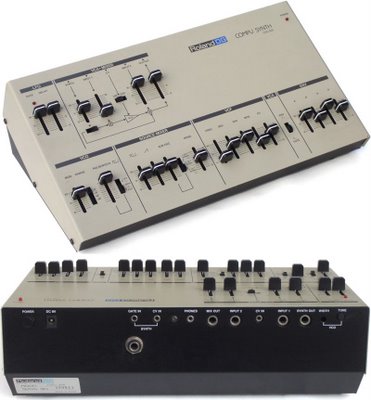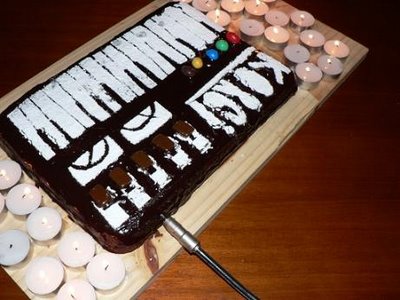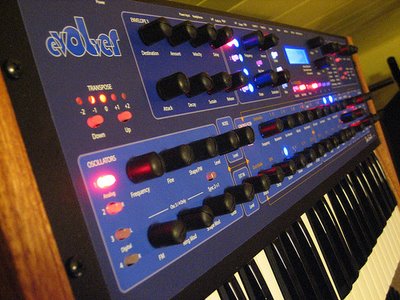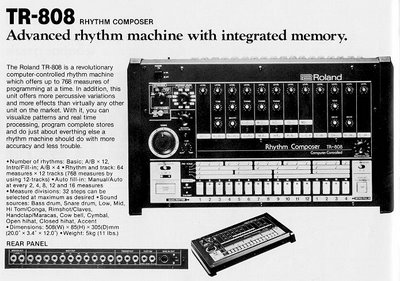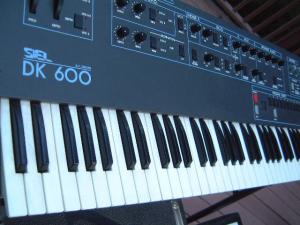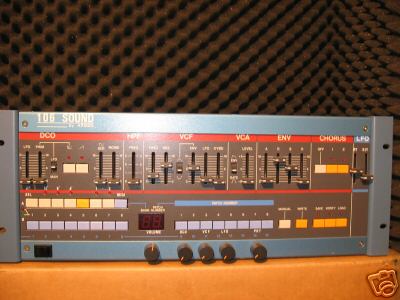
Update via the comments worth noting. But the keyboard version is just too damn sexy.
"We have been servicing them since we we're the U.S. Distributor for a while but only to our customers. But while there are still some spare parts around but some things there are not. So while the insides are essentially just a computer and a sound card you're still gonna have some problems depending on what knob/switch/display you break.
You should pick up a VS instead, they have almost almost every feature the hardware did and the controller is simple enough to probably be repaired by anybody. They were selling in Germany for like $150 for a while."
Title link takes you to shots pulled from
this auction. Details below. Note that there are 10 available with a Buy it Now of $3,832.00. As usual, I no affiliation with this sale, just saving it for the archives of synth history... Via
Melissa's Blog.
"Neuron's synthesis engine is powered by the technology found in neural networks (for more on this, see the section "Neural Networks"). It uses models as the basis for sound generation. In conceptual terms, these models are comparable to samples, and they are derived by analyzing audio samples. This means that in principle, any auditory event can provide the raw material for creating and processing sound in Neuron. It ships with some 100 of these models on its internal hard disk. Though this is a huge store of sound design resources, you are free to analyze audio resources (samples) of your own, using our proprietary ModelMaker software, and archive them in the form of user models. These models contain the actual sound as well as the parameter sets that were captured during neural analysis. Parameter sets are subdivided in up to three levels, and they may be manipulated via the resynators' sticks. That makes Neuron the first synthesizer offering dynamic parameter assignment tailored specifically to the sound that you select for processing.
The Human Interface
The ergonomic design of many modern electronic music instruments comes courtesy of company founder Axel Hartmann's creative urges. His experiences with musicians and manufacturers flowed into the operating and handling principles that help make Neuron so special.
The Neuron's extraordinary user interface is a crucial feature alongside its innovative sound generation system. Our philosophy dictates that every Hartmann instrument is easy to understand and use, that it handles intuitively, and that makes discovering new technology fun. To live up to that promise, we were compelled to invent several new control features. The tactile experience of generating sound via Neuron is something entirely apart from what users have encountered with conventional synthesizers.
The control features feel like what they are - different, unprecedented. Powerful yet subtle sound-sculpting tools, they throw the window to a new and unexplored sonic vista wide open. Starting with great legacy sounds, the musician ventures forth on a quest for unknown sonic treats by cutting, tucking, snipping and sewing these time-tested sounds. He can do this with the delicate touch of a neurosurgeon or the harsh hand of a butcher. The intelligent Snapshot function lets him take pictures of every and any stop along his auditory journey. This lets him backtrack should he get lost or want to return to a "Kodak Moment".
All dynamic parameters are controlled via rotary encoders with an infinite control range. The displays and indicator panels provide direct visual reference to the settings for the current program even when switching sounds.
The technical specifications of Neuron
Template driven Multi-Component Particle Transform Synthesis with realtime controllable synthesis model parameters | ANN (Artificial Neural Network) controlled adaptive sound analysis for the parametric transformation of musical monophonic and polyphonic sounds | Glide | 2 Resynators with 3 parameter layers per Scape/Sphere, stick recording function, 1 ADSR modulation envelope per Resynator, 1 amp envelope per Resynator (ADSR), 1 definable envelope (4 levels/4 times, also definable as pitch envelope) | Slicer for the generation of multi-dimensional, cyclic modulation | Silver unit with multi-mode filter with 3 parameter levels and a maximum of 3 ADSR envelopes (1 per parameter level), 2 Part Multi-FX processor (1 x Time FX / 1 x Frequency FX) | Surround unit with Stick-control (recordable) | Extra high-end delay (with tap function) and reverb
32bit internal signal path | digital signal processing with 32bit/64bit | floating point precision | high speed-CPU | 256 MB internal RAM | 20GB hard Disk
3 Cross-X-displays with Stick-controller and 4 back-lit LCD displays with 3 digit parameter level and 8 digit parameter name | 1 Control Center with 2x16 digit back-lit LCD display, X/Y stick and endless dial (encoder) with push/enter function | 12 endless wheels (encoders) with visual displays, 6 endless dials (encoders) | Controller unit with self centering, bi-directional stick-controller for pitch and modulation control (definable) | 1 definable endless-wheel (encoder) with visual display, 1 definable endless-dial (encoder) | Master volume dial | Large, backlit central on/off switch at rear of instrument | 5 octave (61 key) velocity sensitive, lightly weighted keyboard with channel aftertouch
Units shipping with app. 250 models / 200 sounds in memory / room for more then 200 setups | 4 times multimode | Amount of voices is dependent on the chosen neural synthesis model (up to 24) | Memory assignment and organization is achieved using a 10 button keyboard with up/down and 10's hold | Snapshot function for easy access to cache and instant saving and recall of edited sounds
Freely definable outputs (max. 6x Mono / max. 3 Stereo / 5.1 Surround) | Midi In / Out / Thru, USB port for external backup devices (CD-writers, Hard-Drives, Memory sticks etc.) and connection to a network | S/PDIF In / Out (digital, 44.1 kHz / 24bit), Stereo In, headphone connector, sustain pedal, freely definable switch and continuous controller connection
Power consumption: 250W | Dimensions: 952mm (w) x 98mm (h) x 373mm (d) | Weight: 17.5kg"
 This one via Benjamin Pacheco.
This one via Benjamin Pacheco.
